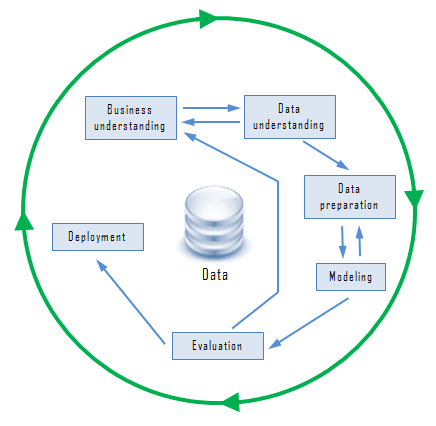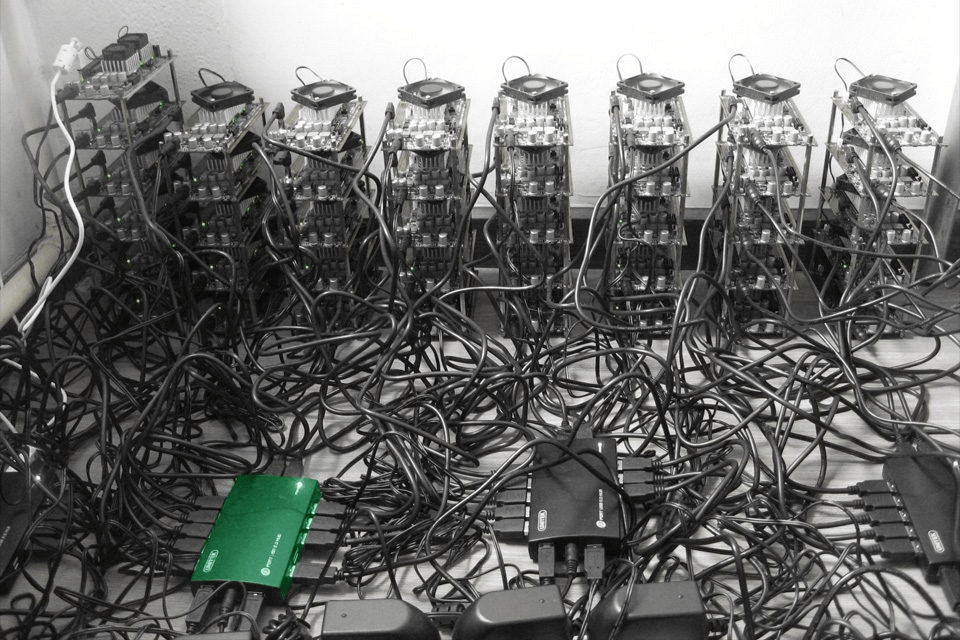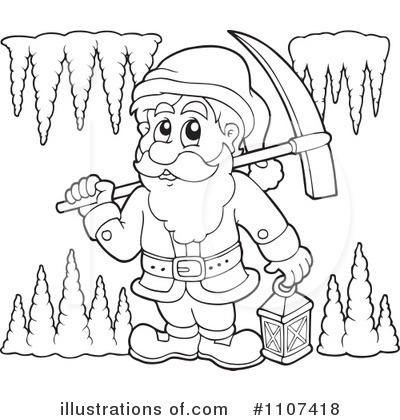
The want for miniaturization of present drilling equipment is growing not only within the mineral industry but additionally for NASA to investigate drilling on Mars. The improvement of guided microdrill methods for the shallow depths of many mineral exploration tasks might be difficult.
A few industrial minerals are “floor treated” for special business functions. To meet market specifications within the kaolin and clay industries products are often bleached with a sodium hydrosulfite or related compound to improve whiteness or brightness, or ozone is added to oxidize organic substances. Other minerals, corresponding to mica, are surface handled with organic compounds to attain chosen coatings on the mineral. Hydrometallurgical techniques are additionally used in the production of lithium, boron, soda ash, sulfur, and different distinctive minerals. In general, the industrial-minerals trade has very limited curiosity in hydrometallurgical analysis; its analysis needs are either particular to a single mineral or are required to attenuate adverse environmental impacts.
What are the 2 main types of mining?
Across the world, mining contributes to erosion, sinkholes, deforestation, loss of biodiversity, significant use of water resources, dammed rivers and ponded waters, wastewater disposal issues, acid mine drainage and contamination of soil, ground and surface water, all of which can lead to health issues in local

Considerably more research and development shall be necessary earlier than this space of bioprocessing delivers commercially viable products and processes. A extra fruitful method may be to focus on creating these technologies for environmental management in mining and, when demonstrated effective for that use, modifying the technology for metallurgical processes.
Baseline climatological, hydrological, and mineralogical information are vital; for instance, acid-rock drainage shall be tremendously minimized in arid climates where pure oxidation has already destroyed acid-generating sulfide minerals or where water flows are negligible. Large drills are used to sink shafts, excavate stopes, and procure samples for evaluation. Lifts carry miners into and out of mines, and transfer mining rock and ore out, and equipment in and out, of underground mines. Huge trucks, shovels and cranes are employed in floor mining to maneuver large portions of overburden and ore. Processing vegetation make the most of massive crushers, mills, reactors, roasters and different tools to consolidate the mineral-wealthy material and extract the specified compounds and metals from the ore.
Some of those metals are regarded as toxic and unsafe and have to be eliminated earlier than effluents can be discharged to the environment. Therefore, the development of innovative, environmentally friendly applied sciences will be extremely essential. Minimizing waste technology and using wastes to provide useful by-merchandise while maintaining economic viability must be a objective for brand spanking new technologies. Hydrometallurgy uses essentially the most sophisticated features of kinetics, answer chemistry, and electrochemistry to understand its full value. Major advances in understanding fundamental chemistry and bodily phenomena in processing will contribute to improved extraction and separation efficiencies, as well as decrease environmental influence.
Mineral exploration involves both percussion and rotary drilling that produce rock chips and intact samples of core. The diameter of mineral exploration drill holes (called slimholes) is generally much smaller than the diameter of both petroleum or geothermal wells. Therefore, lots of the down-gap tools used for drilling within the petroleum and geothermal fields are too massive for use within the mineral exploration slimholes.
Almost all mineral exploration entails drilling to find what is under the floor. No significant adjustments in mineral drilling expertise or strategies have been made for greater than three decades (NRC, 1994b). This contrasts sharply with spectacular advances in drilling technologies, together with extremely directional drilling, horizontal drilling, and a variety of drilling instruments for the in-situ measurement of rock properties, for the petroleum and geothermal sectors.
Innovations could be made, nevertheless, with the event of inexpensive gravity separation strategies that might be used to get well small portions of heavy minerals from metallic-mining flotation tailings. The use of multiforce fields in the separation of particles might improve gravity separation in combination with different processes. In-situ mining is the “removing of the precious components of a mineral deposit with out bodily extraction of the rock” (Bates and Jackson, 1987). In-situ leaching is a kind of in-situ mining in which metals or minerals are leached from rocks by aqueous solutions, a hydrometallurgical course of (American Geological Institute, 1997). As used on this report the term in-situ mining includes variations that contain some bodily extraction.

Large-scale autoclaves are used for production of zinc and nickel and to treat refractory gold ores (Mason and Gulyas, 1999). New developments in autoclave expertise for stress leaching a copper concentrate can also be helpful for other mineral methods.

Mathematical modeling to profile metals and predict optimum efficiency would enhance the overall fee of metals recovery. Recently, encouraging results have been obtained using a high-decision resistivity approach to survey poorly wetted (nonpenetrated) areas in the heap. In-situ mining aids, corresponding https://blockchaincasinos.online/ to catalysts, surfactants, and wetting agents, could accelerate leach kinetics and increase the permeability of rock surfaces. New lixiviants could be particularly beneficial for maximizing metals extraction from near-floor deposits using in-situ methods.
The use of excessive-stress technology has been demonstrated for quite a lot of commodities in acidic and primary options under oxidizing and lowering conditions. Because of increased mining reaction charges for both oxidative and reductive processes, stress hydrometallurgy can be a suitable expertise for the future.
In addition, sensing, analyzing, and speaking data and information will turn out to be increasingly important. Mining environments also present unique challenges to the design and operation of kit.
What are the 3 types of mining?
The three most common types of surface mining are open-pit mining, strip mining, and quarrying. See also mining and coal mining.
Environmental effects
In the sphere of geological sciences more support for basic science, including geological mapping and geochemical analysis, would supply important although gradual enhancements in mineral exploration. Filling gaps in fundamental knowledge, together with thermodynamic-kinetic information and detailed four-dimensional geological frameworks of ore techniques, would provide advantages not only for mineral exploration and development but additionally for mining and mineral processing.
A mechanism for focusing research on an important points, as recognized by industry, would assist focus industrial, governmental, and academic resources on these problems. Underlying bodily and chemical processes of formation are frequent to many metallic and nonmetallic ore deposits. A good deal of information is missing about the processes of ore formation, starting from how metals are launched from supply rocks via transport to deposition and post-deposition alteration. Modeling of those processes has been restricted by important gaps in thermodynamic and kinetic knowledge on ore and gangue (waste) minerals, wall-rock minerals, and alteration products.
The geological framework of an ore system contains the three-dimensional distribution of rock types and construction, such as faults and fractures, as well as the fourth dimension of time—how the rocks and structures fashioned. This framework is essential to profitable exploration, environment friendly mining, and later reclamation. Focused research on the event of exploration fashions for “environmentally friendly” ore deposits may yield essential leads to the brief time period.
- In the sphere of geological sciences extra support for basic science, together with geological mapping and geochemical analysis, would supply important though gradual enhancements in mineral exploration.
- Focused analysis on the development of exploration fashions for “environmentally pleasant” ore deposits may yield important ends in the quick time period.
- This framework is essential to successful exploration, environment friendly mining, and later reclamation.
- The geological framework of an ore system contains the three-dimensional distribution of rock types and construction, similar to faults and fractures, as well as the fourth dimension of time—how the rocks and structures fashioned.
- Filling gaps in basic data, including thermodynamic-kinetic information and detailed four-dimensional geological frameworks of ore methods, would offer advantages not just for mineral exploration and growth but also for mining and mineral processing.
- A mechanism for focusing research on an important points, as identified by business, would help focus industrial, governmental, and tutorial assets on these issues.

Composed of a large number of advanced parts, mining systems must be extraordinarily reliable. Therefore, revolutionary upkeep methods, supported by fashionable monitoring applied sciences, shall be needed for growing the productive operational time of equipment and the mining system as an entire. Surface mining, wherever applicable https://blockchaincasinos.online/cloud-mining/, is extra advantageous than underground mining when it comes to ore restoration, operational flexibility, productiveness, security, and price. Currently, nearly all nonmetallic minerals (greater than 95 percent), most metallic ores (greater than ninety %), and a large fraction of coal (more than 60 percent) are mined by surface strategies (Hartman, 1987).

Gravity separation (together with processes that use other forces as adjuncts) isn’t used much in processes for metal ores because sources of ores amenable to gravity separation are actually uncommon. Innovations continue to be made in gravity separation strategies for metallic minerals, as well as for sure industrial-mineral processes, but mature applied sciences and machine designs are adequate for steel ores and coarse coal.
Explore the Geosciences
The main elements can be combined innovatively, corresponding to when in-situ leaching of copper is undertaken after standard mining has rubblized ore in underground block-caving operations. For instance, the shortcoming to ascertain the situations ahead in the mining face impedes fast advance and creates health and safety hazards. As mining progresses to larger depths the increase in rock stress requires revolutionary designs for making certain the brief-term and long-term stability of the mine construction. Truly continuous mining will require innovative fragmentation and material-dealing with methods.
Metal reserves and recycling
The software of hydrometallurgical techniques within the coal industry is much more restricted. The coal trade could, however, have an interest in the chemical removal of mercury or sulfur, or both. Bacteria, fungi, yeast, and algae recover and concentrate metals from options utilizing a wide range of metabolic strategies. Most research in this space is concentrated on using microbial mechanisms for environmental administration as opposed to hydrometallurgical processing.
In many instances, notably in arid environments where rocks are uncovered, detailed geologic and alteration mapping has been the important thing factor within the discovery of main copper and gold deposits. The three main components of mining (exploration, mining, and processing) overlap somewhat. After a mineral deposit has been identified through exploration, the trade must make a substantial investment in mine development earlier mining than manufacturing begins. Further exploration near the deposit and additional growth drilling throughout the deposit are carried out whereas the mining is ongoing. In-situ mining, which is handled underneath a separate heading in this chapter, is a special case that combines elements of mining and processing however does not require the excavation, comminution, and waste disposal steps.
Surface mining
This improvement could be the continuation of a trend that began with dump leaching and heap leaching, solvent extraction/ electrowinning, followed by bioleaching and strain oxidation. Future analysis and growth focused on progressive reactor designs and materials, sensors, modeling and simulation, high-strain and organic fundamentals, leaching, and separation reagents are prone to continue this trend mining. Like different components of mining, mineral processing may also benefit from the combination of unit processes for optimum performance, financial advantages, and environmental advantages. Research and improvement alternatives specific to mineral processing are listed in Table 3-four. When priceless metals are dissolved in aqueous media, different metals could dissolve as properly.
What are advantages of mining?
Mining techniques can be divided into two common excavation types: surface mining and sub-surface (underground) mining. Today, surface mining is much more common, and produces, for example, 85% of minerals (excluding petroleum and natural gas) in the United States, including 98% of metallic ores.
Mining
What do we mine for?
Mining is the extraction (removal) of minerals and metals from earth. Manganese, tantalum, cassiterite, copper, tin, nickel, bauxite (aluminum ore), iron ore, gold, silver, and diamonds are just some examples of what is mined. Why mine? Mining is a money making business.
These information are important to an understanding of the geological historical past of ore formation. A geologic database would be useful not solely to the mining trade but additionally to land-use planners and environmental scientists.
What are the professionals and cons of mining?
The want for characterizations of potential waste rock and surrounding wall rocks, which can both function chemical buffers or present fluid pathways for escape to the broader environment. Baseline research to find out hydrologic conditions and natural occurrences of potentially poisonous components in rocks, soils, and waters are also changing into important. The baseline information will be vital to determining how mining might change hydrologic and geochemical situations.
What are the 4 types of mining?
Mining is the extraction of valuable minerals or other geological materials from the Earth, usually from an ore body, lode, vein, seam, reef or placer deposit. These deposits form a mineralized package that is of economic interest to the miner.
Processing of placer ore material consists of gravity-dependent strategies of separation, similar to sluice bins. Only minor shaking or washing could also be necessary to disaggregate (unclump) the sands or gravels before processing. Processing of ore from a lode mine, whether or not it is a floor or subsurface mine, requires that the rock ore be crushed and pulverized earlier than extraction of the dear minerals begins. After lode ore is crushed, restoration of the valuable minerals is completed by one, or a mixture of several, mechanical and chemical techniques. The most essential change within the mineral business within the next 20 years could possibly be the complete alternative of smelting by the hydrometallurgical processing of base metals.
What is mining in simple words?
Mining is the process of digging things out of the ground. Any material that cannot be grown must be mined. Mining things from the ground is called extraction. Mining can include extraction of metals and minerals, like coal, diamond, gold, silver, platinum, copper, tin and iron.
However, as surface mineral deposits are exhausted, underground mining will inevitably turn into extra prevalent. In addition, as more easily minable deposits are depleted, mining expertise and tools and mining systems for extracting problematic deposits will have to be developed. The focus of research on geological ore deposits has changed with new mineral discoveries and with swings in commodity prices. Geoscientists have developed numerous models of ore deposits (Cox and Singer, 1992). Models for ore deposits that, when mined, have minimal impacts on the surroundings (corresponding to deposits with no acid-producing capacity) and for deposits that may be amenable to progressive in-situ extraction might be essential for the longer term.
